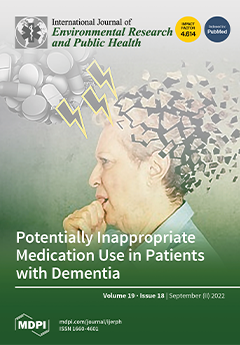Background: Over the past decades, childhood overweight has increased in many African countries. We examined the relationship between sedentary behaviour, moderate-to-vigorous physical activity (MVPA), and body composition in South African primary schoolchildren living in peri-urban settings.
Methods: MVPA was measured via 7-day accelerometry
[...] Read more.
Background: Over the past decades, childhood overweight has increased in many African countries. We examined the relationship between sedentary behaviour, moderate-to-vigorous physical activity (MVPA), and body composition in South African primary schoolchildren living in peri-urban settings.
Methods: MVPA was measured via 7-day accelerometry and body composition via bioelectrical impedance analysis in 1090 learners (49.2% girls, M
age = 8.3 ± 1.4 years). The relationships between MVPA and sedentary behaviour with the various body composition indicators (body fat and fat-free mass [total, truncal, arms, and legs], bone mass, muscle mass, and body water) were tested with mixed linear regressions.
Results: The prevalence of overweight and obesity was 9.8% and 6.6%, respectively; 77.1% of the children engaged in ≥60 min of MVPA/day. Girls were more likely to be overweight/obese, to accumulate less than 60 min of MVPA/day, and had significantly higher relative body fat than boys (
ps < 0.001). Lower MVPA was associated with a higher likelihood of being overweight/obese, higher relative body fat, and lower relative fat-free mass, bone mass, muscle mass, and body water (
ps < 0.001). For lower sedentary behaviour, the associations with body composition pointed in the opposite direction.
Conclusions: In this South African setting, girls are a particularly relevant target group for future physical activity interventions to prevent overweight/obesity-related non-communicable diseases in later life.
Full article





